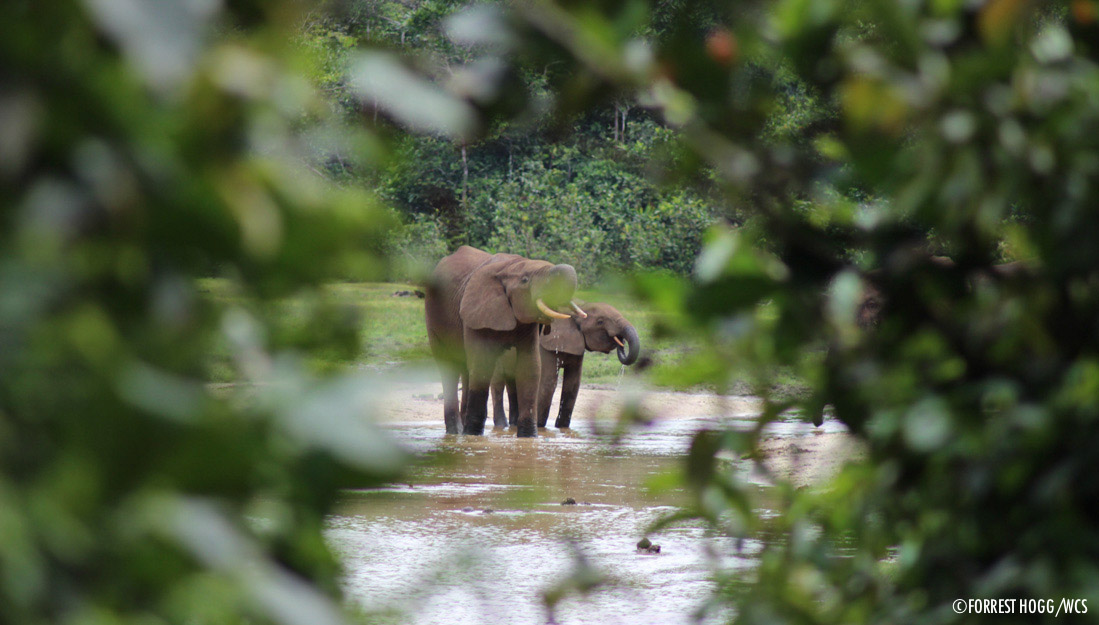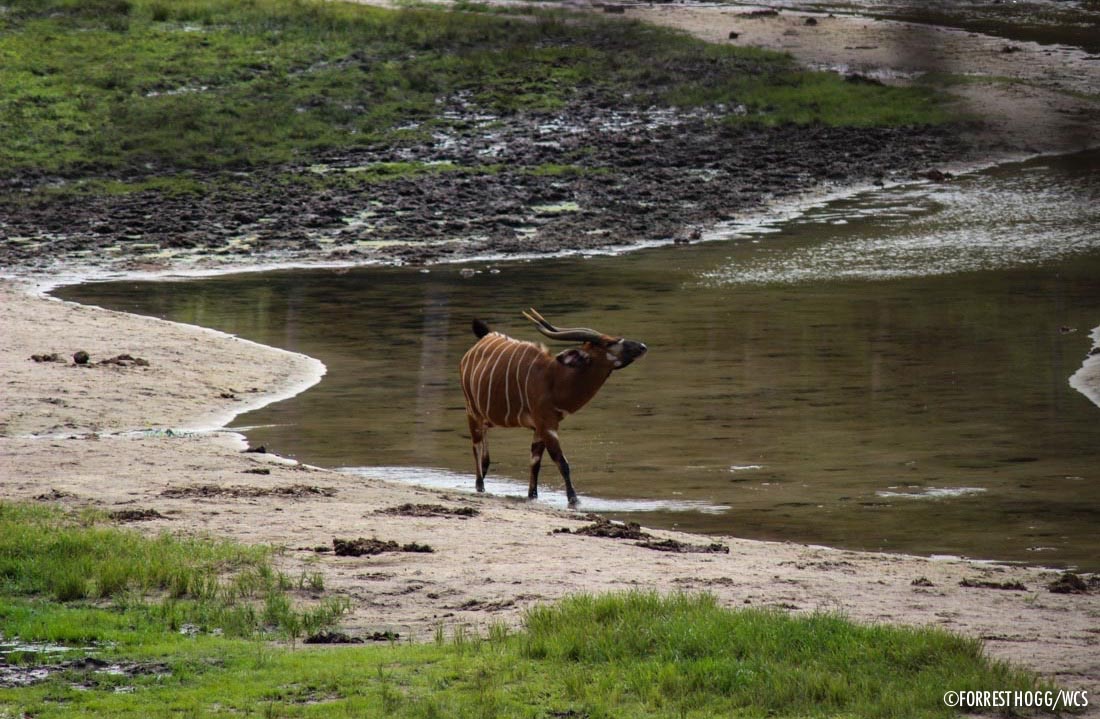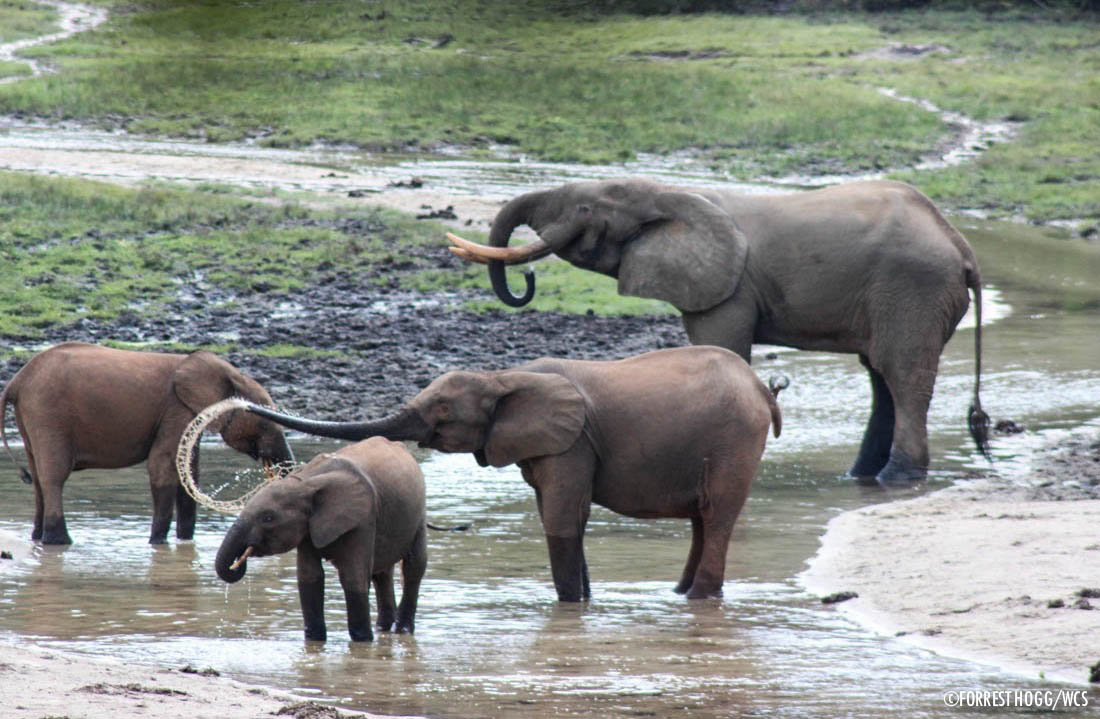A window in the forest
After three days, two river crossings and several leeches, we reach our first destination. We set about making camp and the following morning we cover the final 4 kilometres to Mabale bai. Bais are natural forest clearings, unique to the lowland rainforests of central Africa. They act as social arenas, watering holes and mineral deposits for many large mammals. Forest elephants, for their size (3-5 tonnes), move through the understory with silent ease and are difficult to study. Bais offer windows into the secret lives of these otherwise hidden giants.
We creep to the bai edge, and clamber up a tree. Ten metres up, a window between the branches opens. Down below, a family of elephants quietly draws up water from the Mabale stream. The wind shifts and they sense our presence and become vigilant, but do not exit the bai for sometime.
”Forest elephants, for their size (3-5 tonnes), move through the understory with silent ease and are difficult to study. Bais offer windows into the secret lives of these otherwise hidden giants.
After another week in the forest, we arrive at the third and last bai of our mission. As we draw near, Bakamba finds fresh human signs. Bonye bai is not a far cry from the CAR border. In other areas, hunters have been known to target bais as greater animal density provides greater hunting success. We scout the area but lose the trail.
The following day, aloft in a fig tree, we are treated to a spectacular view. A bongo, the largest forest antelope of Congo, strolls into the clearing. Even Bakamba, the oldest tracker, shows a look of surprise. These elusive animals are difficult to see and Bambenjele folklore forbids hunting of this species. If you kill a bongo, your Ekila is lost, therefore your skills as a hunter and husband diminish. Boris reassures me that I would be fine if I were to take a photo of the impressive, horned male striding across the Bonye bai.
Three weeks later, with significantly lighter loads, we arrive back at the Motaba River and descend. We had reached the three bais, mapped them and recorded the identities of the elephants present – a basis for developing a future monitoring programme for the north.




